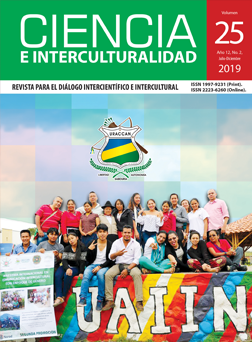Cultural communicational contents analysis of couplets from Ayora Parish, Cayambe Canton, Pichincha Province, Ecuador
DOI:
https://doi.org/10.5377/rci.v25i2.8547Keywords:
Communication, Couplets, Decolonization, InterculturalityAbstract
This research analyzes the communicational contents of the couplets of the indigenous - mestizo territory of the Kayambi, Ayora-Cayambe people, Pichincha Province, Ecuador, from an intercultural, decolonial and personal communication perspective. The information was collected from interviews that allowed for the first time to collect the couplets and their cultural historical memory in the grandparents from the community and community groups. The testimonies of the population, the results of the statistics, and the analysis of contents of the couplets affirm the existence of an Andean couplet, different from the Spanish couplet. The main results show that in the old couplets there is more content related to living with nature, there are themes related to birds, rivers, hills, fruits. On the other hand, the negative contents of the couplets are circumstantial and proliferate in the absence of creation processes aimed at cultivating cultural identity and do not represent the mentality or way of being of the population. In the same way there is a rooting with the Kichwa mother tongue that reveals that the couplets first appeared in the Kichwa language. The study determined that in the Ayoreñas -Cayambeñas couplets of indigenous legacy, the communicative sense stands out above the rhyme, so it differs from the Spanish couplet. The couplets constitute a point that unites the indigenous and mestizo population of the Kayambi people and the Cayambe canton, therefore it is essential to promote cultural and communicational processes that re-enchant the ancestral sense of this form of own communication.
Downloads
1789
HTML (Español (España)) 1196
EPUB (Español (España)) 260
Resumen (Audio) (Español (España)) 321
Abstract (Audio) 310
Downloads
Published
How to Cite
Issue
Section
License
Copyright © (URACCAN)

This journal is licensed under a Creative Commons Attribution-NonCommercial-NoDerivatives 4.0 International License.
This license allows others to download the works and share them with others, as long as their authorship is acknowledged, but they can not be changed in any way nor can they be used commercially.




